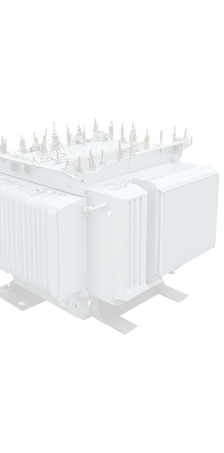In the electrical and power industry, Transformers play a critical role in voltage regulation and energy distribution. Over time, they undergo wear and tear, and one of the most common maintenance procedures is transformer rewinding. However, completing the rewinding process isn’t the end of the story. To ensure optimal performance and safety, thorough quality testing after rewinding is a must.
In this blog, we’ll break down the key types of quality tests conducted after rewinding a transformer, why they matter, and how they help extend the unit’s operational life—especially if you’re dealing with used transformers.
Why Quality Testing Matters After Rewinding
Transformer rewinding involves replacing or repairing the coil windings, which can deteriorate due to overheating, short circuits, or insulation failure. Rewinding helps bring the transformer back to life, but without proper testing, there’s a risk of failure during operation.
Quality testing ensures:
- Electrical reliability
- Mechanical integrity
- Insulation resistance
- Safety compliance
- Extended service life
Especially when dealing with surplus transformers or units that have been through heavy usage, testing becomes even more essential.
Types of Transformer Quality Tests After Rewinding
1. Insulation Resistance Test
This test checks the condition of insulation between the windings and between windings and ground. A megohmmeter (or “megger”) is used to measure the resistance. A high insulation value means the transformer is ready; a low value indicates the rewinding wasn’t done properly or there’s a fault.
If you’re planning to sell used transformers, this test helps validate the integrity and build confidence with potential buyers.
2. Turns Ratio Test
The turns ratio compares the number of turns in the primary coil to the secondary coil. After rewinding, this test verifies the transformer will step voltage up or down correctly as per design. An incorrect ratio might mean a mistake during coil winding.
This test is critical before offering a unit under the tag used transformers for sale near me—customers expect accurate voltage control.
3. Polarity and Phase Relationship Test
Incorrect polarity or phase displacement can cause system failures. This test ensures the transformer connections are correct and the unit operates in sync with other transformers in a grid.
It’s especially useful if you’re dealing with a power transformer used in parallel operations or part of a larger power distribution system.
4. Winding Resistance Test
After rewinding, it’s important to measure the resistance of each winding to detect any faults or poor connections. Deviations from the original design specs could lead to excessive heat and further breakdowns.
This test helps qualify the rewinding job and reassures those planning to buy used transformers that the product meets standard performance metrics.
5. High Voltage or Dielectric Test
Also called a “hi pot” test, this involves applying a high voltage between windings and from windings to ground to see if the insulation holds. It’s one of the most trusted methods to detect insulation weaknesses that may not show in regular use.
For clients looking at surplus transformers, a passed hipot test often determines whether the unit is worth investing in.
Other Crucial Tests for Transformer Rewinding
- Core Loss and Load Loss Testing – Helps measure the energy efficiency of the rewound transformer.
- Oil Testing (for oil-immersed units) – Ensures that insulating oil is still clean, non-acidic, and has high dielectric strength.
- Temperature Rise Test – Checks that the transformer can handle rated loads without overheating.
- Impulse Test – Confirms the transformer can withstand lightning or switching surges.
Each of these tests plays a role in certifying whether the rewound transformer is ready to return to service or be put back on the market.
Why This Matters to Buyers and Sellers of Transformers
If you’re in the business to sell transformer, quality testing proves that the rewound unit is not just refurbished—it’s reliable. For buyers, especially those looking for transformers for home, industrial use, or resale, test reports can significantly influence purchasing decisions.
Testing also helps avoid liability and ensures compliance with industrial standards, especially in regulated markets like California transformer installations.
How to Ensure Proper Testing
Always choose a reliable transformer company with experience in transformer rewinding and testing. Ask for:
- Complete test reports
- Rewinding documentation
- Warranty or guarantee of performance
- Visual inspection for rust, cracks, or improper fittings
Whether you’re a seller or buyer, ensure that the unit passes all tests before signing a deal.
Final Thoughts
Transformers are complex and critical devices. After rewinding, simply powering them back on without testing is risky and short-sighted. Proper post-rewinding quality testing not only confirms that the transformer is fit for duty but also boosts its resale value, lifespan, and reliability.
If you’re in the market to buy used transformers, always request detailed test results to make an informed choice.



